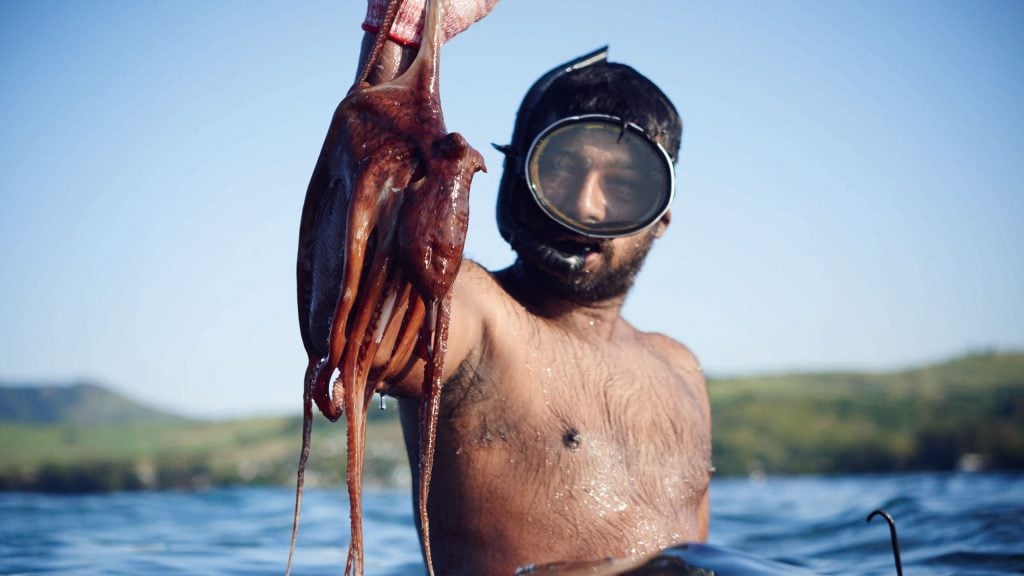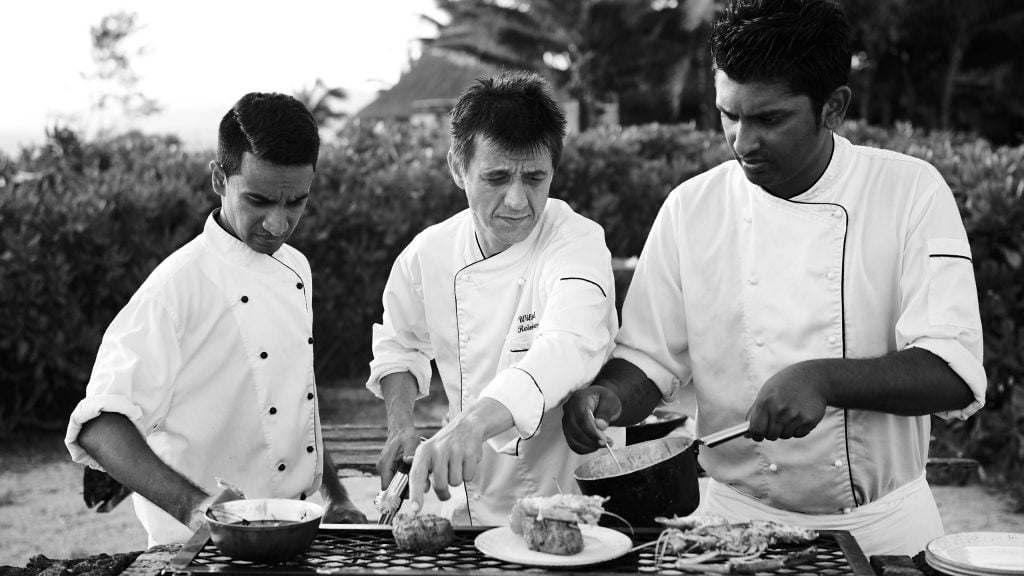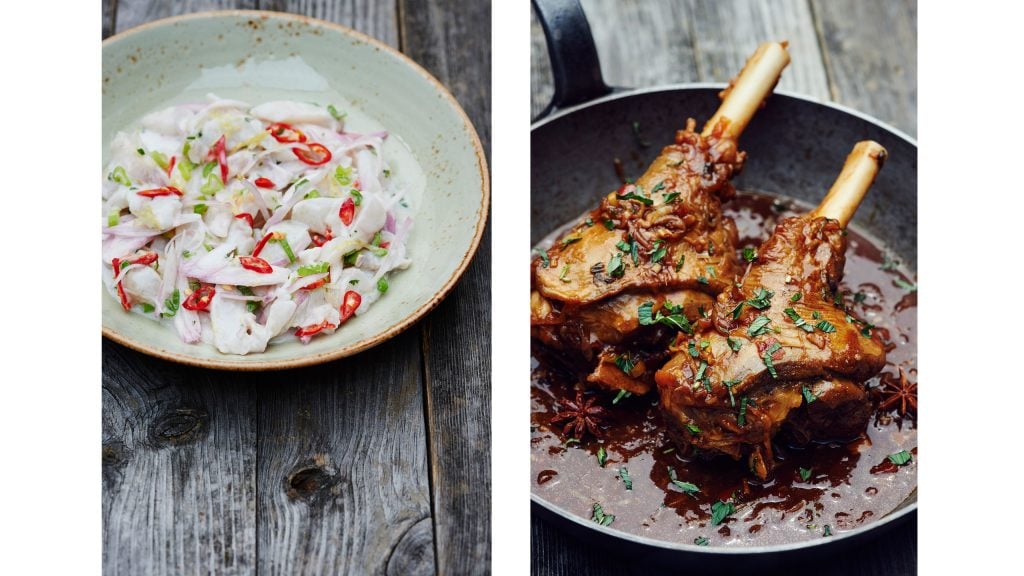Chef Willibald Reinbacher of Shanti Maurice, Mauritius, tells us about the concept behind Aquacasia – Culinary Jewels of the Indian Ocean, his book of recipes showcasing Indian Ocean cuisine.

What is the concept of ‘Aquacasia’?
‘Aquacasia’ was conceptualised by MPS Puri [the chief executive of the Nira Hotels group, which runs Shanti Maurice], who believes that the best chefs are simply ‘translators of a place’; they tell a story through the flavours and tastes of a region, and it was this simple concept that gave him inspiration for Aquacasia.
Aquacasia – Culinary Jewels of the Indian Ocean brings together authentic, wholesome dishes from the isles of Comoros, Madagascar, Mauritius, Seychelles, Sri Lanka, Reunion, Indonesia, Maldives and Western Australia. Inspired by resourceful street traders and authentic family recipes passed down through countless generations, Aquacasia is all about a gastronomic journey through the rich and colourful flavours of the Indian Ocean islands.

‘Aquacasia – Culinary Jewels of the Indian Ocean’ – recipe book by Chef Willibald Reinbacher.
What’s special about Indian Ocean cuisine?
It would have to be the sheer diversity of cuisine that stretches across all of the islands. From Australia in the east to Madagascar in the west, each country’s signature recipes have been influenced by traders and immigrants who have lived there over the years.
The Indian Ocean, which is the warmest of the world’s oceans, is still very rich in fish and seafood. The sea around Madagascar contains a vast amount of prawns, crayfish and crabs whilst, here in Mauritius, we have some of the best yellow fin tuna I have ever tasted.

Fishing in Mauritius.
Also, each of the islands’ tropical climates allows for a large variety of fruit and vegetables to grow locally, such as coconut, tamarind, litchi and mangoes. Aquacasia showcases this gastronomic diversity by celebrating the bounty of the Indian Ocean. The aim is for our recipes to delight European, Asian and Middle Eastern palettes, with a type of food that is genuinely a ‘joy to eat’ [a strapline of the Aquacasia book].

How did you research the recipes for the book?
In order to curate the recipes for Aquacasia – Culinary Jewels of the Indian Ocean recipe book, I have had to really get to know each of the islands in order to capture their respective culinary treasures and recipes.
I have been a chef for a total of 15 years and have spent several of these here in Mauritius learning the mastery of spice. I have also had the opportunity to visit many of the surrounding islands, seeking inspiration from local chefs. My most recent trip was to Sri Lanka, where I found the cuisine to be similar to that of Mauritius with an emphasis on coconut, rice and key spices. I also enjoy experimenting with different recipes at home and often reach out to local island friends for their insight and expertise.

Spices in Sri Lanka.
Does any one country stand out the most for you personally? Why?
When I met my wife, who is Mauritian, I found my second home on the island. Mauritius is the perfect place to live and I have the culinary jewels of the Indian Ocean right on my doorstep.
From a gastronomic perspective, I am particularly fond of Bali and Sri Lanka, which offer a rich diversity of locally sourced and fragrant flavours. For me, the greatest attribute of the Aquacasia recipe book is that from a cooking point of view, I now have all of the islands in one place.

Balinese cuisine.
What’s your background, prior to arriving at Shanti Maurice?
I grew up in an Austrian ski resort where all crops were farmed locally – this definitely contributed to my strong passion for homegrown ingredients, which developed at an early age. When I was 15, I started my apprenticeship in classical French cuisine, and I then spent nine years in Dubai working alongside some of the best chefs in the world.
How do your Austrian roots influence your food (if at all)?
There is a strong Austrian influence in the menus at Shanti Maurice; this is especially evident in our focus on locally sourced ingredients, which we grow in the hotel’s herb garden.

What are some of your favourite dishes featured in the book?
At this moment in time, it would have to be the fish ceviche with coconut and lemon – the acidity of the citrus is mixed with a fusion of sweet and spicy flavours, all of which hit your palette at the same time, a gastronomic explosion! It is just a ‘joy to eat’ and is the perfect representation of Mauritian cuisine. That said, there are so many wonderful dishes in this book and most importantly, they are all very easy to cook at home.

What will guests of Shanti Maurice learn about food whilst at the resort?
To describe it in a few words ‘eating in our resort is like a journey from island to island’. The Indian Ocean islands are an untapped resource when it comes to their cuisine, but the one thing they all have in common is the celebration of homegrown ingredients.









